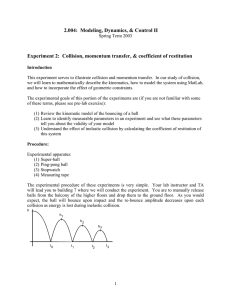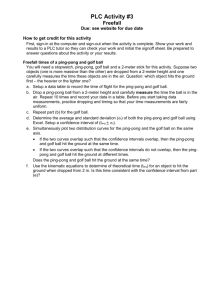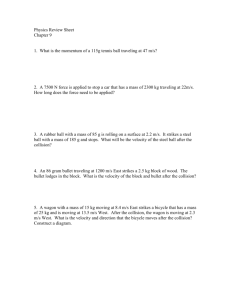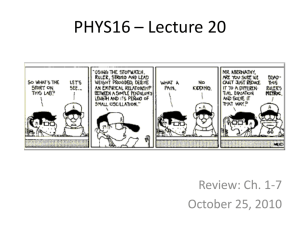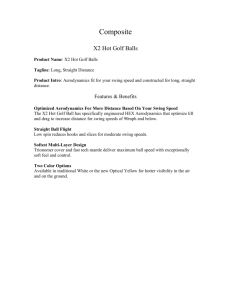Name:________________________________________ Position the ramps so that they oppose each other. ... the ramps as a guide and to mark the results...
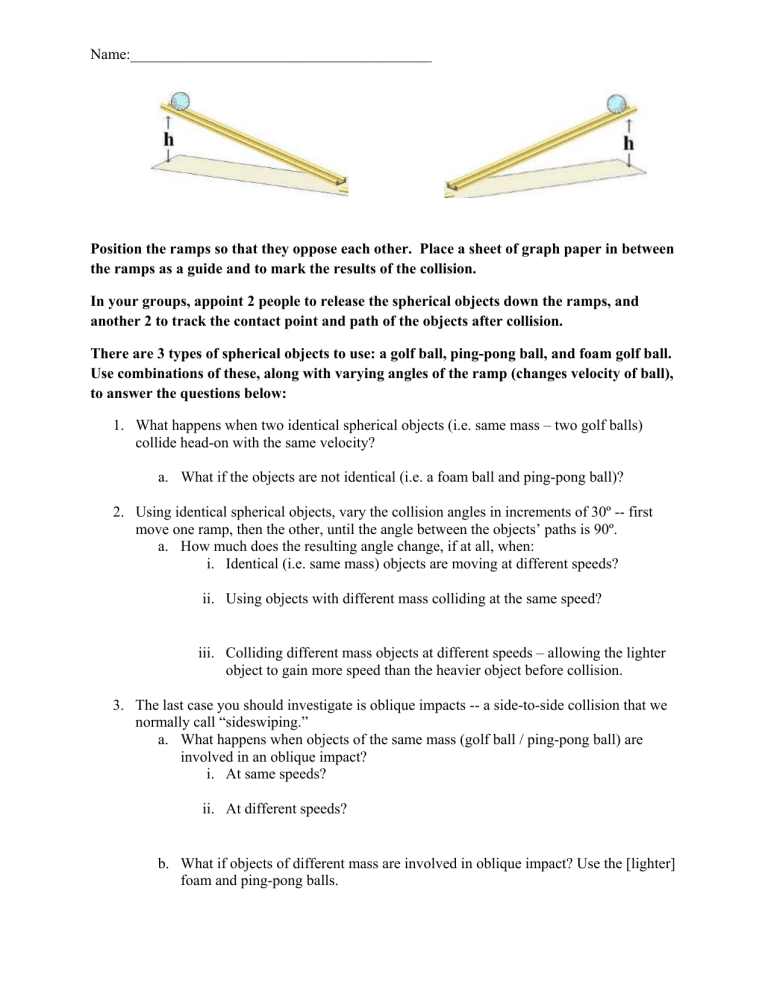
Name:________________________________________
Position the ramps so that they oppose each other. Place a sheet of graph paper in between the ramps as a guide and to mark the results of the collision.
In your groups, appoint 2 people to release the spherical objects down the ramps, and another 2 to track the contact point and path of the objects after collision.
There are 3 types of spherical objects to use: a golf ball, ping-pong ball, and foam golf ball.
Use combinations of these, along with varying angles of the ramp (changes velocity of ball), to answer the questions below:
1.
What happens when two identical spherical objects (i.e. same mass – two golf balls) collide head-on with the same velocity? a.
What if the objects are not identical (i.e. a foam ball and ping-pong ball)?
2.
Using identical spherical objects, vary the collision angles in increments of 30º -- first move one ramp, then the other, until the angle between the objects’ paths is 90º. a.
How much does the resulting angle change, if at all, when: i.
Identical (i.e. same mass) objects are moving at different speeds? ii.
Using objects with different mass colliding at the same speed? iii.
Colliding different mass objects at different speeds – allowing the lighter object to gain more speed than the heavier object before collision.
3.
The last case you should investigate is oblique impacts -- a side-to-side collision that we normally call “sideswiping.” a.
What happens when objects of the same mass (golf ball / ping-pong ball) are involved in an oblique impact? i.
At same speeds? ii.
At different speeds? b.
What if objects of different mass are involved in oblique impact? Use the [lighter] foam and ping-pong balls.


